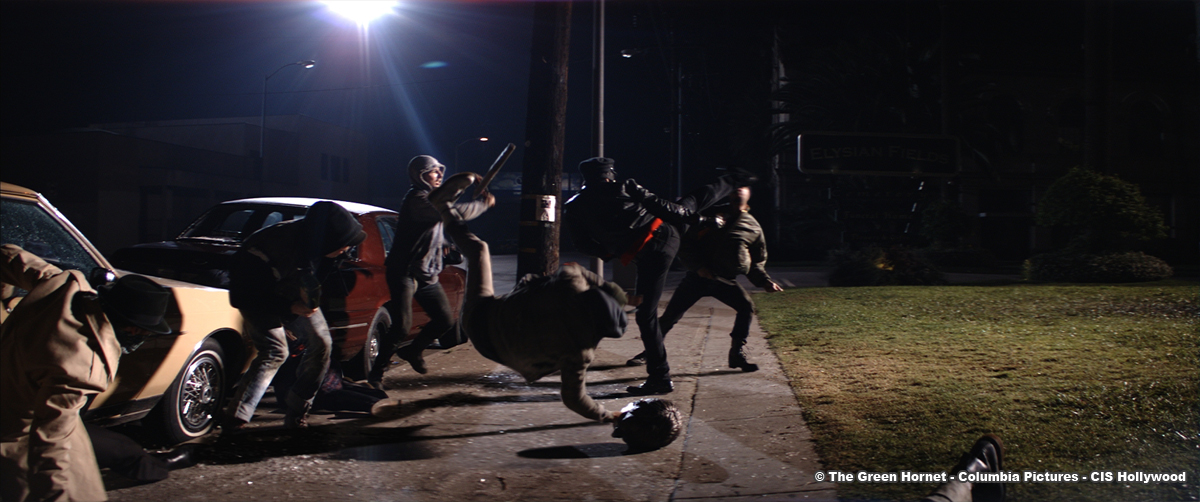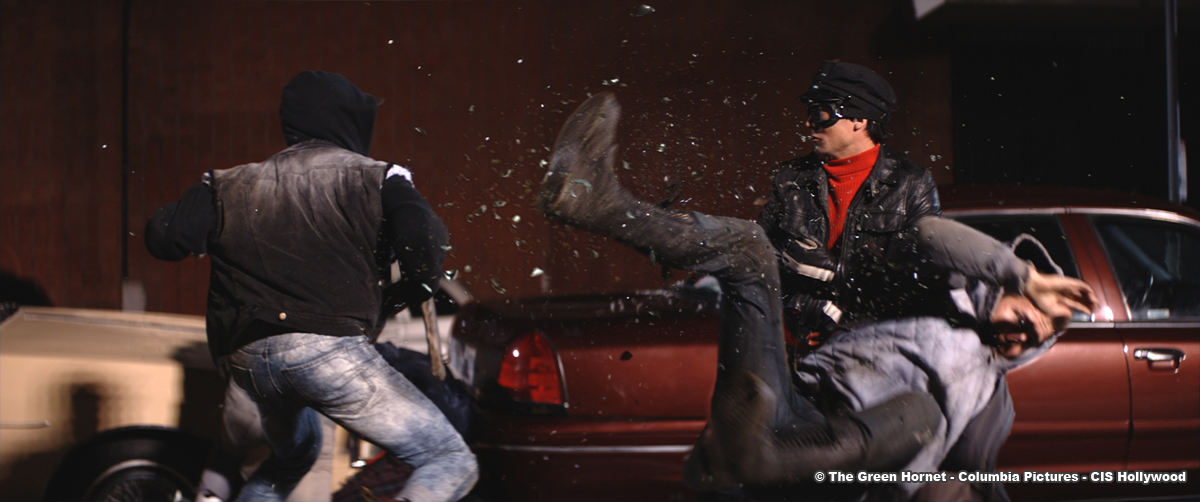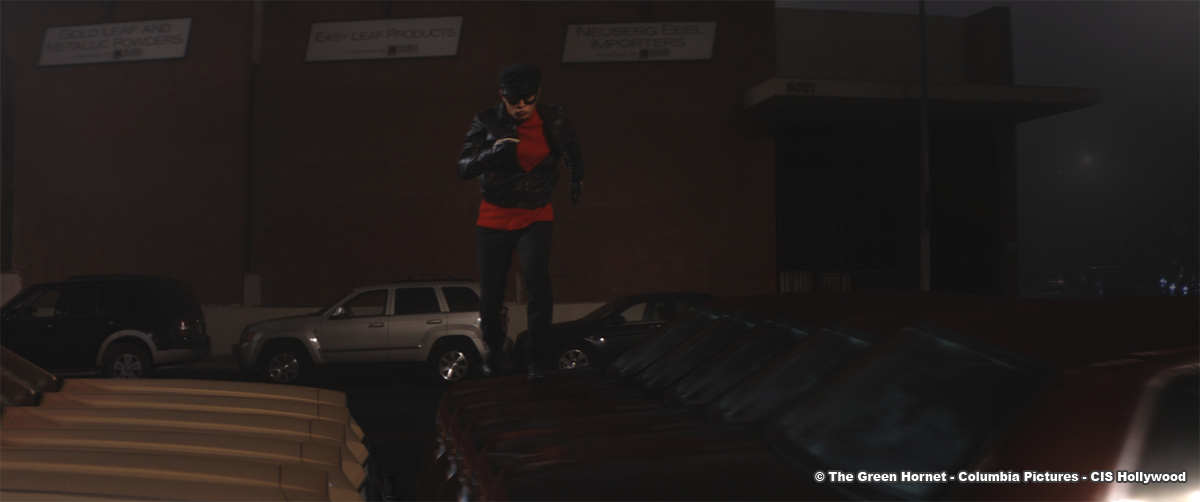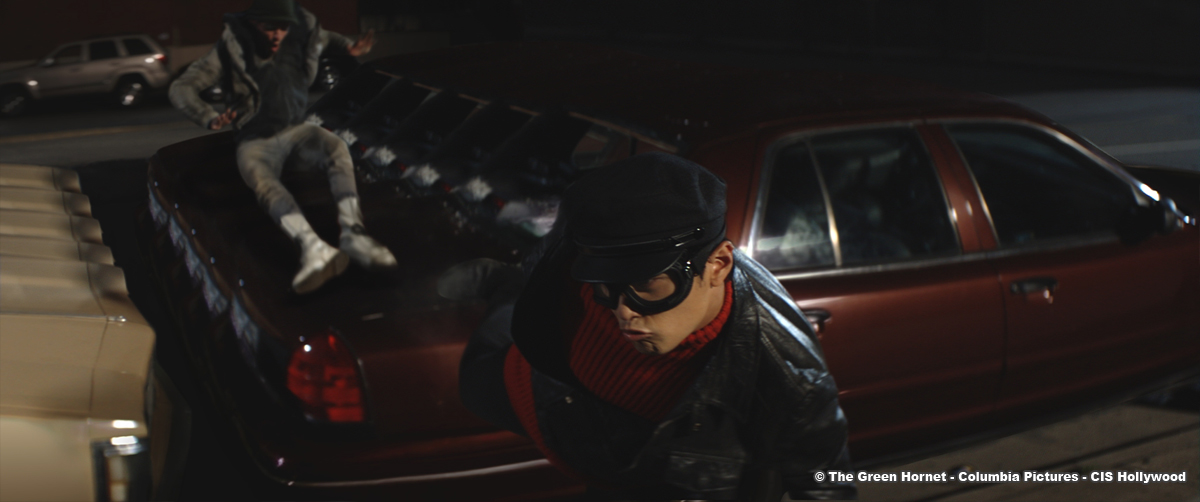Greg Oehler worked at CIS Hollywood for over 15 years and has participated in many projects such as TITANIC, THE BOURNE ULTIMATUM, WATCHMEN or INVICTUS.
What is your background?
I studied Mass Communications at University of Denver and went through the film program at University of Colorado. I finished my formal schooling in the Motion Picture/Television program at UCLA in. After graduation, I began working art department on features, television and commercials. I was art director and production designer on low to moderate size projects, set decorator and leadman on medium to large. In 1995, I turned my attention to the digital revolution as it was taking the movie industry by storm. Largely self taught, I started by doing roto and paint work, but soon got involved in compositing, effects, and design on the Inferno platform. Much of this work has been at CIS Hollywood where I have been a vfx supervisor for the last few years.
How was the collaboration with director Michel Gondry and production visual effects supervisor Jamie Dixon?
I very much enjoyed this collaboration. Anyone who is familiar with Michel Gondry’s work knows that his visual footprint is very distinct. He is always searching for creative and original ways to tell his stories with imagery. He is quite savvy around platforms such as the Flame. During design sessions, he is able to see beyond rough composites and color in order to communicate his vision to artists so they understand the larger framework of his intentions. I cannot say enough about Jamie Dixon. His creative, articulate and calm demeanor made my job much easier and enjoyable than I could have imagined.
How did CIS Hollywood got involved in this project?
In the Autumn of 2009, Jamie Dixon brought some test footage Michel Gondry had shot. The footage was of two men, shot against black, in various fighting modes. Some test vfx were applied that experimented with speed, motion blur and warping. Armed with updated footage, Jamie had asked if we could augment some of the concepts in the tests and bring them to the next level in accordance to the directors vision.
What are the sequences made by CIS Hollywood?
Our sequences included the “time bending” and “Kato vision” fight sequences seen just after Brit and Kato cut the head off the statue of Brit’s father, the South Central fight when Brit and Kato take on several gang members, and the sequence in the newspaper bullpen as Brit discovers his own “Brit vision” and helps rescue Kato from Chudnofsky. We also did an elaborate split screen sequence where Chudnofsky launches an offensive against anyone wearing green. We rounded up our work with several speed augmentation shots, various composites and stereo 3D enhancements.
With what camera did you shoot the scenes of slow motion?
The scenes involving slow motion effects were shot on a Phantom camera.
What are the advantages and disadvantages shooting with a Phantom camera?
The chief advantage of the Phantom camera is it’s small size and amazing high speed capability. The only, and minor, disadvantage I saw was the introduction of very subtle artifacts at higher speeds.
Can you explain how you created the slow motion shots?
For the “time bending” fight sequences, all footage was shot between 150 and 300 fps. This helped our retiming efforts greatly by providing us with lots of frames to build timing curves.
All shots were shot on location, without the use of a blue screen and shot in their entirety and without solo performances. This was done to preserve as much of the original fight choreography and performances as possible. Doing this did create a big challenge for us to separate characters from each other, fill in their bodies where occluded and patch together backgrounds. Through lots of roto, warping and morphing, we made individual plates of each character separated from their background.
Choreography was achieved through a series of Flame sessions with the director.
Because Kato had to be the driving force, his timing was most aggressive and had to dictate the flow of the fights. His re-timing had everything to do with generating and transferring energy for each fight event, so his timing ramped in accordance to the number of contact points with each villain. Once a fluid re-time was established on Kato, all the other villain characters needed contrasting timings. These timings would answer each punch with the energy delivered, making the few frames f contact the only time Kato and his opponents shared the same timing. We prolonged the recoil from each blow to allow the villains to linger in space while Kato rushes off to dispatch with another foe. We used Flame’s Timewarper to rough out character timings and Furnace’s Kronos re-timer and motion blur to finesse the results. Once all characters were properly timed, they had to be tracked and animated into new locations so their new timings would integrate back into the scene.
How did you proceed with the shots where things are getting longer and echoing?
The echoing shots were ideas that Michel wanted to include to emphasize Kato’s amazing fighting abilities but without suggesting Kato had any sort of super powers. For the shot where Kato runs across several expanding cars, Michel had lined up two identical parked cars for the actor to run across. This was to provide a base for the shot. During the editing and fx process, a different concept emerged: Kato was to jump on a single parked car which would then multiply and echo toward camera as he ran across them toward the villains. The cars would then snap back the moment before the fight commences. A new background, new cars and a new Kato had to be built. Kato had to be re-timed and looped so that the original three steps he took across the car became twelve. An oversized matte painting was made to accommodate the needed depth and several cars were created and animated for the echoing. The final step was adding light cues, reflections and shadows. 2D solutions were used and also executed on Flame.
Can you tell us about the design and the creation for the Kato vision?
Again, the director wanted to convey Kato’s ability to foresee the fight he was about to engage in, but stop short of the super human realm. Michel wanted to get inside of Kato’s head, literally, for these moments. Stylized painted elements were created of Kato’s eye and retina for the camera to fly around in order to literally see through Kato’s eyes. Many ideas were considered to demonstrate Kato’s focus on the weapon threats, however, simple red streaks that shot from behind Kato’s eyes and wrapped around the weapons or persons that threatened Kato was employed as a visual device to map out Kato’s plan of attack. The director liked their simplicity and they gave the scene a graphic feel.
Do you use digital doubles for those sequences?
The only sequence where digital doubles were used was during the South Central fight sequence. As Kato again dispatches with multiple villains, he leaps up onto Black Beauty and the camera spins around 180 degrees to show Kato flipping through the air to take out the last thug. Because this was a digital spin, digital doubles were employed for all characters except Kato. This was a creative device that stitched together two separate shots that were oriented 180 degrees from each other.
What was the biggest challenge on this project?
One of the bigger challenges was to produce work consistent with expectations of a Michel Gondry project. He has so many ideas and lyrical visual concepts, that I really wanted to provide him with what he wanted. Additionally, Michel was very trusting. Once a basic look and choreography was established, he did not micro manage the work. I think this trust motivated and pushed myself and our artists to raise the challenge and work harder to insure his confidence was warranted.
Was there a shot or a sequence that prevented you from sleeping?
I generally sleep fairly well, but the closest sequence to have that effect would have been the split screen sequence in which the action within the shots divides as the frame splits allowing the camera to follow the diverging paths. This continues until there are fifteen or sixteen separate cells, each peeling off a bit of the narrative. This was such a fun sequence to do, but there was a lot of room for error. The individual sequences were shot quite well but required anywhere from 2 to 13 separate plates to produce a seamless split. Additionally, there were re-edits, and growing time constraints so every element needed to be refashioned, re-timed and re-married together.
What is your pipeline and software at CIS Hollywood?
We chiefly use Nuke for our compositing needs, though, most of THE GREEN HORNET was done on the Flame. Maya and Houdini round out our CG department.
How long have you worked on this film?
The first I saw of THE GREEN HORNET was in October of 2009. I did some preliminary testing, then the film was shot. Elements began filtering into our facility around February of 2010 and we finished our last shot in early November of 2010.
What was the size of your team?
Our core team was intimate in size. The lions share of the fight sequences and split screens was divided between myself and Tom Daws, another Flame artist. About ten additional artists rounded out the remainder of the work.
What did you keep from this experience?
I think what I liked most about this project is that it employed a very standard, non-fussy set of effects tools in a creative fashion. This project was really about problem solving and devising creative ways to implement the visions of the director, while utilizing and honoring the footage he shot.
What is your next project?
I am supervising a very small crop of shots for PIRATES OF THE CARIBBEAN 4. Next up, I am co-supervising THE ODD LIFE OF TIMOTHY GREEN.
What are the 4 movies that gave you the passion of cinema?
That is a hard question. In fact, almost impossible…
I think my list, while greater than four, would have to include, Stanley Kubrik’s 2001, A SPACE ODYSSEY, Martin Scorsese’s RAGING BULL, William Friedkin’s SORCERER, and Hal Ashby’s BEING THERE.
A big thanks for your time.
// WANT TO KNOW MORE ?
– CIS Hollywood: Official website of CIS Hollywood.
– fxguide: THE GREEN HORNET article on fxguide.
© Vincent Frei – The Art of VFX – 2011











